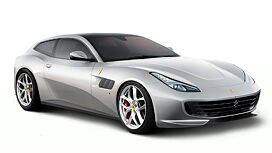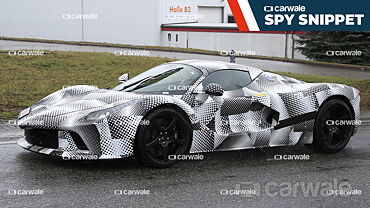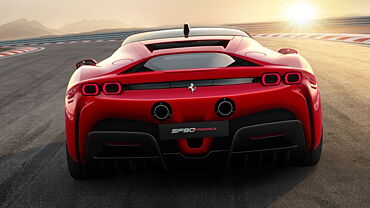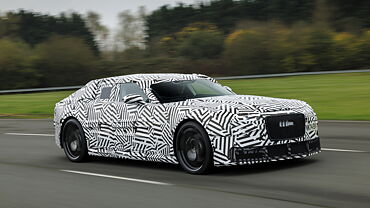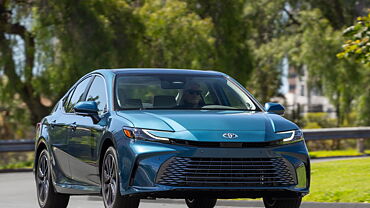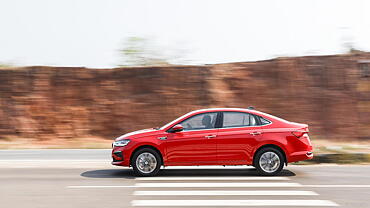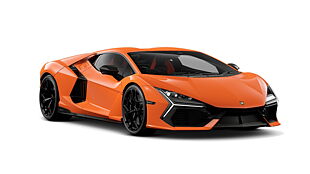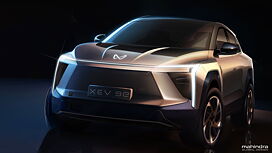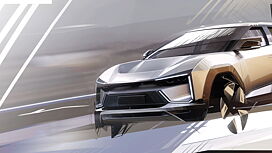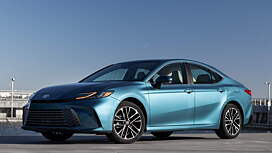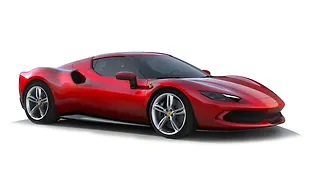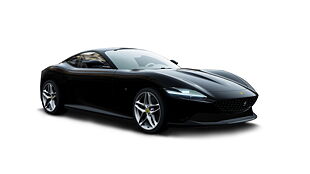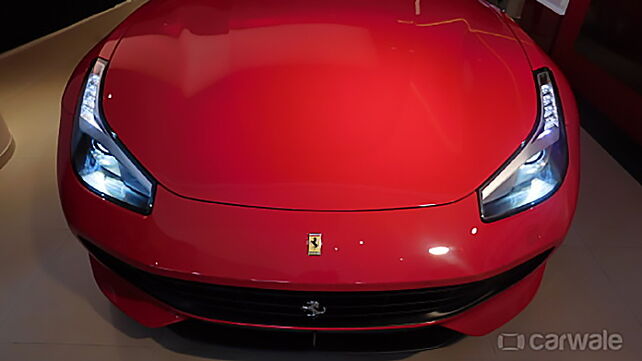
Ferrari introduced the all-new GTC4Lusso and its ‘younger’ variant, the GTC4Lusso T in India. The GTC4Lusso is a replacement for the FF and was introduced last year at the Geneva Motor Show. The current front-engine, four-seater in Ferrari’s portfolio, the GTC4Lusso is a proper GT car with a supercar engine. Here are the top five highlights of Ferrari’s family car.
Two Engine options:
The GTC4Lusso is the first Ferrari to be offered with two engine options. The first is a glorious 6,262cc naturally aspirated V12 engine from the FF, but the power bumps to 680bhp achieved at 8000rpm before redlining at 8,250rpm. Torque is rated at 697Nm at 5,750rpm, but 80 per cent of it is accessible to the right foot from 1,750rpm, says the Italian carmaker. With all the firepower the GT is capable of knocking the 0-100kmph time in a mere 3.4seconds before rocketing to a top speed of 335kmph.

The GTC4Lusso T, on the under hand, has a turbocharged 3.9-litre V8 which pumps out 602bhp of power and 760Nm of torque. The T is rear wheel drive only but retains the 4WS four-wheel steering system. This is the first turbocharged engine housed in a Ferrari since the 1987 2.9-litre F120A V8 of the Ferrari F40 and has won the 2016 International Engine of the Year award.
4RM-S:
There has been a 2+2 Ferrari before, and the FF was the first four-wheel drive Ferrari. But the GTC4Lusso debuts the four-wheel steering in Ferrari’s GT cars. First introduced in the FF, the GTC4Lusso uses the 4RM system integrated with the E-Diff, F1-Trac, SCM and ESC, but is evolved with the new rear-wheel steering. This combined system is now called the 4RM-S (four-wheel drive, four-wheel steering) system.
Developed around the fourth generation of the Side Slip Control (SSC4), the 4RM-S also encompasses the E-Diff electronic differential and SCM-E suspension damping. At the heart of the system is the use of PTU (power transfer unit), a Ferrari patent that delivers four-wheel drive but with a clever distribution of power and torque. There’s also a Magnaride SCM-E damper control integrated into the 4RM-S to ensure the GTC4Lusso maintains comfortable ride for a GT car.
Passenger Display

The GTC4 Lusso features a touchscreen infotainment panel for the co-passenger. The 8.8-inch full HD touchscreen not only displays the car's performance statistics and status but can also be used to interact with its onboard system. For instance, the passenger display can be used for music, sat-nav, speedometer, and tachometer. The display essentially turns the co-passenger into a co-driver, says the Italian carmaker.
Cabin
The GTC4Lusso is current iteration of Ferrari’s 2+2. It is a practical Ferrari with a proper seating space for four adults with a boot space of 450Litres. The rear seats fold down as well extending the carrying space to 800litres. The rear passenger gets a dual-cockpit architecture for individual comfort.

The steering wheel is in typical Ferrari fashion – sporty and racecar-inspired. The cabin is more ergonomic than before, says Ferrari and is 25 per cent quieter than the FF. The climate control system is more efficient with the addition of new RLFSoSe (Rain Light AntiFogging Solar Sensor). The overall cabin is opulent and lavish with leather upholstery and dash of exotic materials.
Competition
One novel thing about the GTC4Lusso is that it has no direct competitor. There aren’t many cars in the market which can boast of a V12 engine, all-wheel drive, comfortable seating for four, two-door station wagon body style and the legacy which can match that of the Prancing Horse.

Even the pricing of the GTC4Lusso has a league of its own. However, the Aston Martin DB11, Bentley Continental GT, Rolls Royce Dawn can be an expensive alternative to the Ferrari. All three English cars are proper GT vehicles in their own right, but the GTC4Lusso is the most practical Italian supercar that money can buy.

